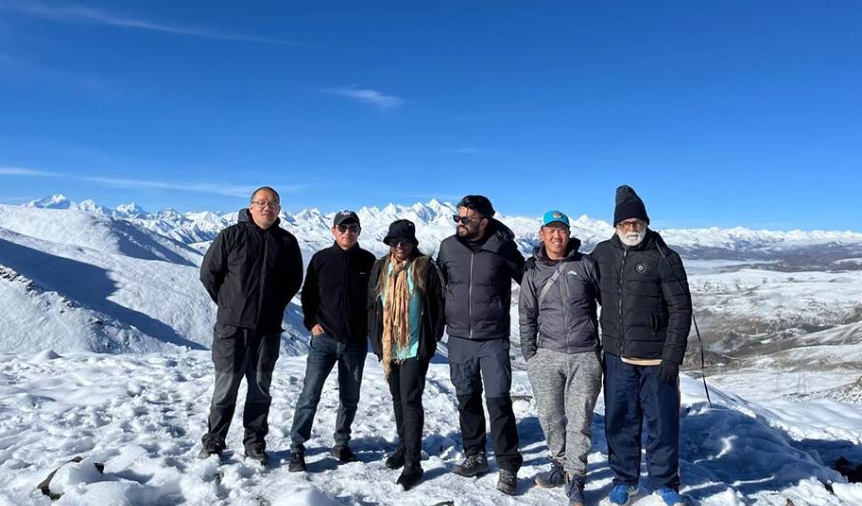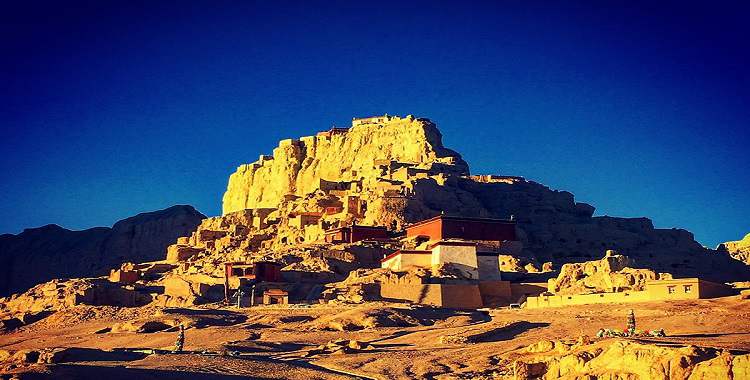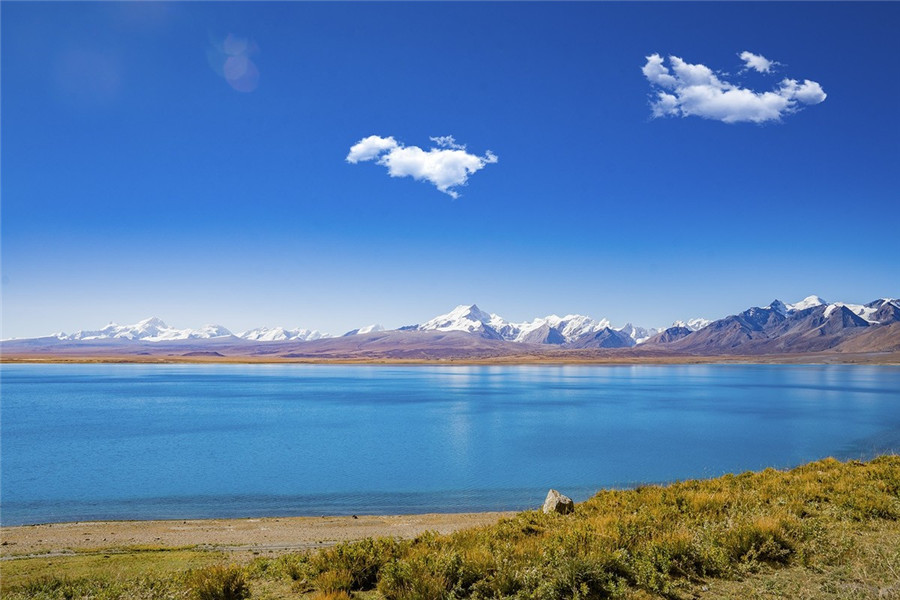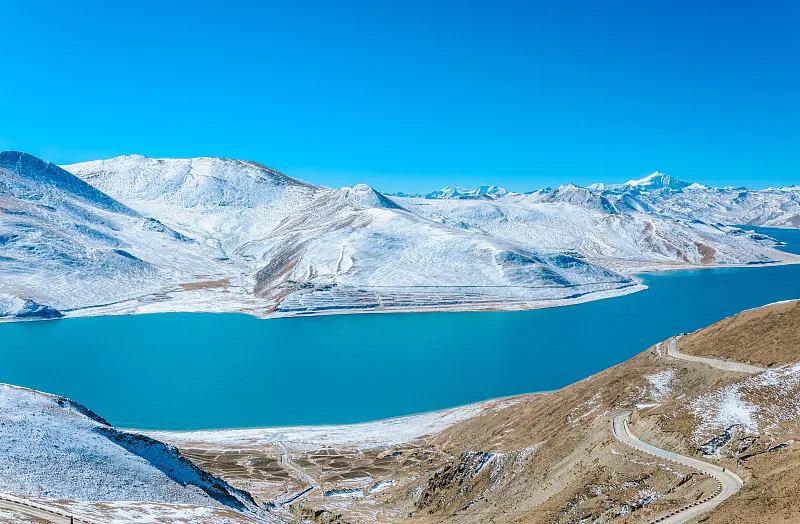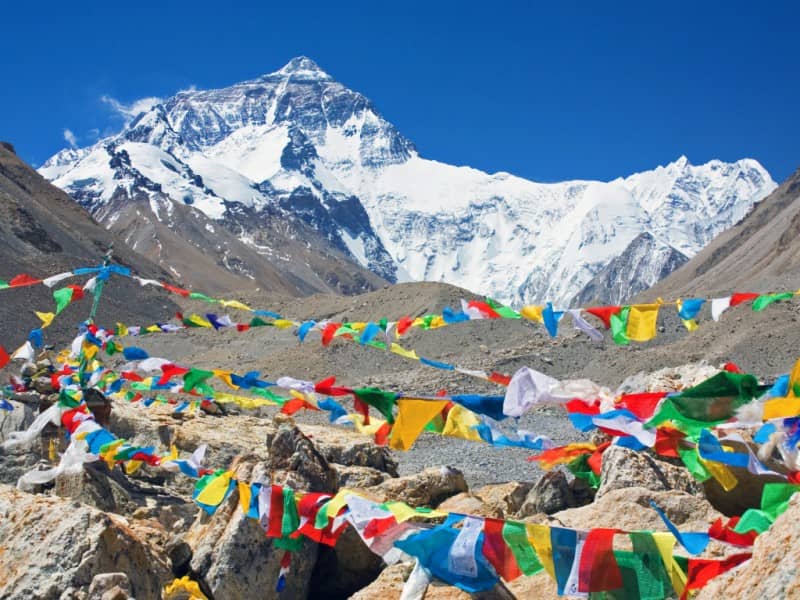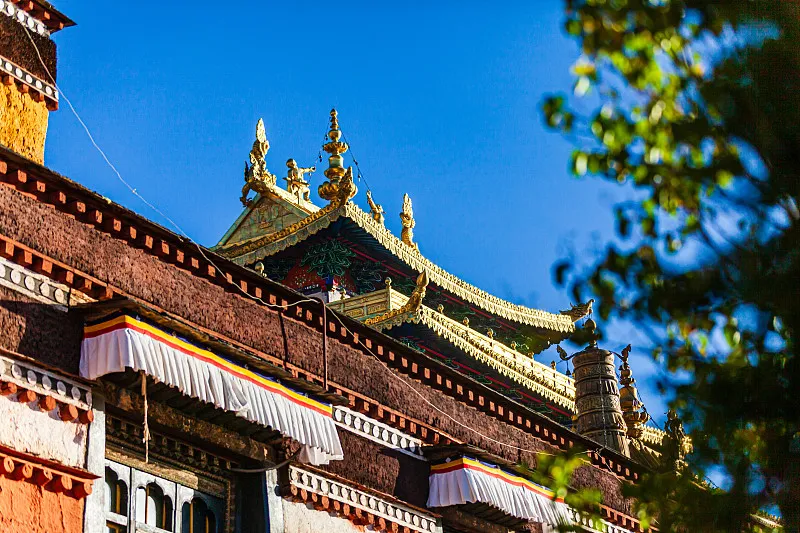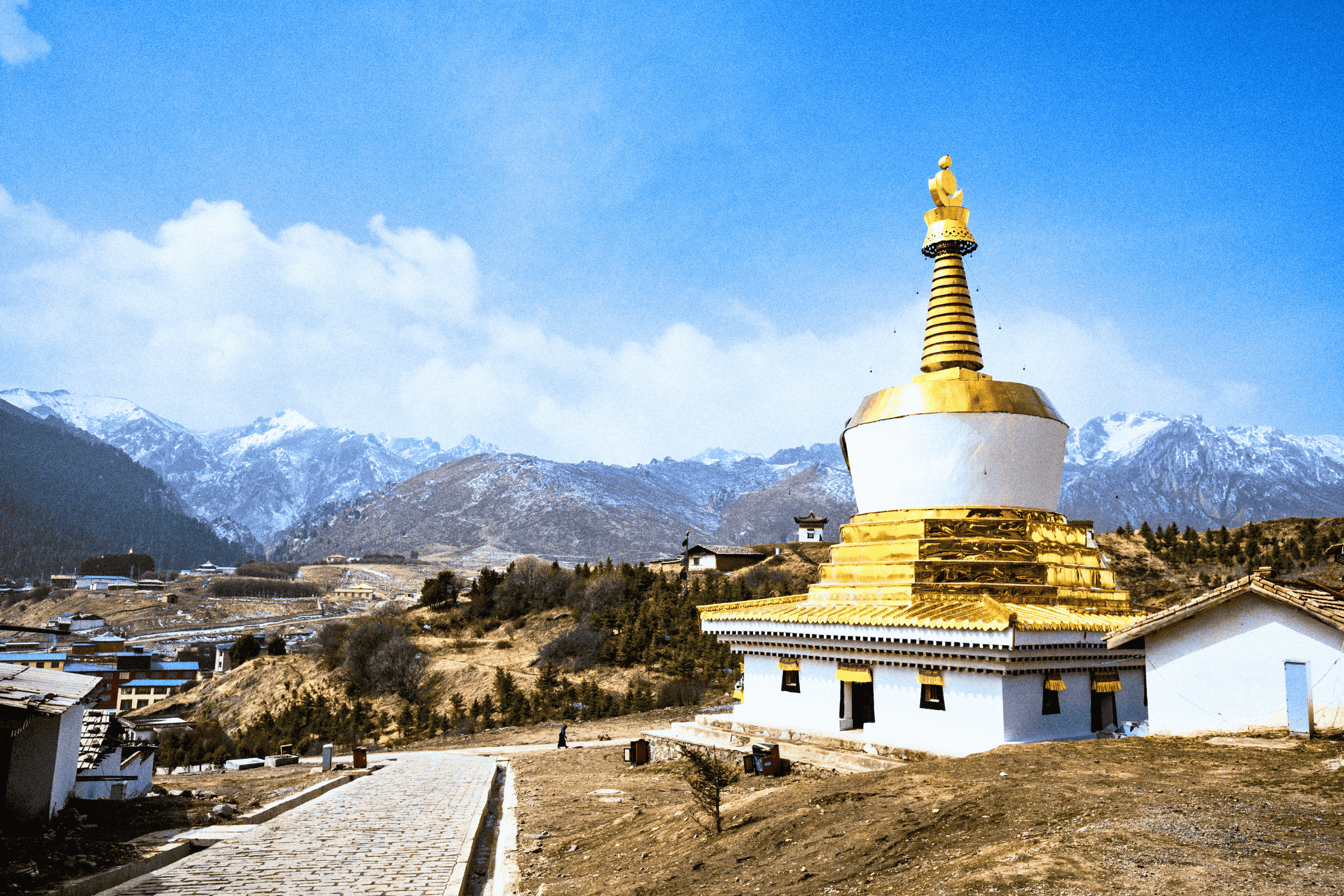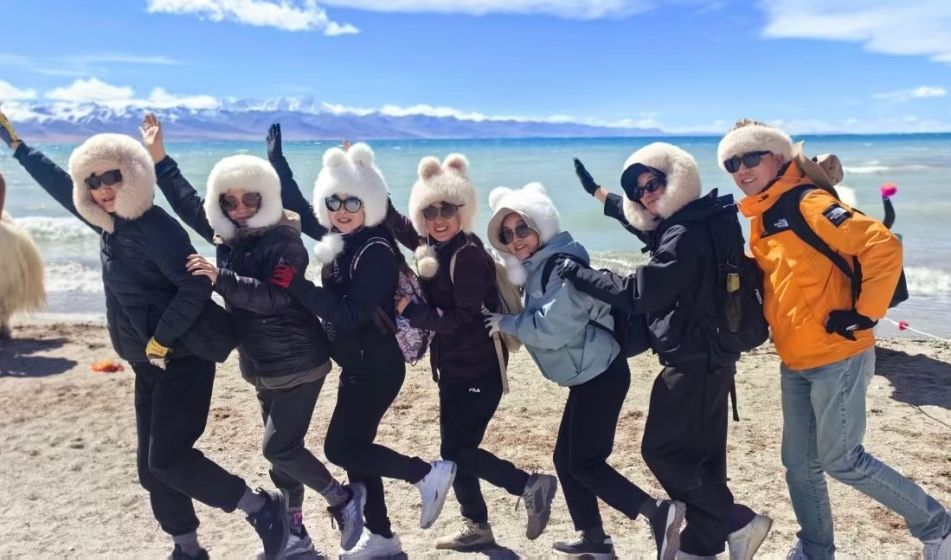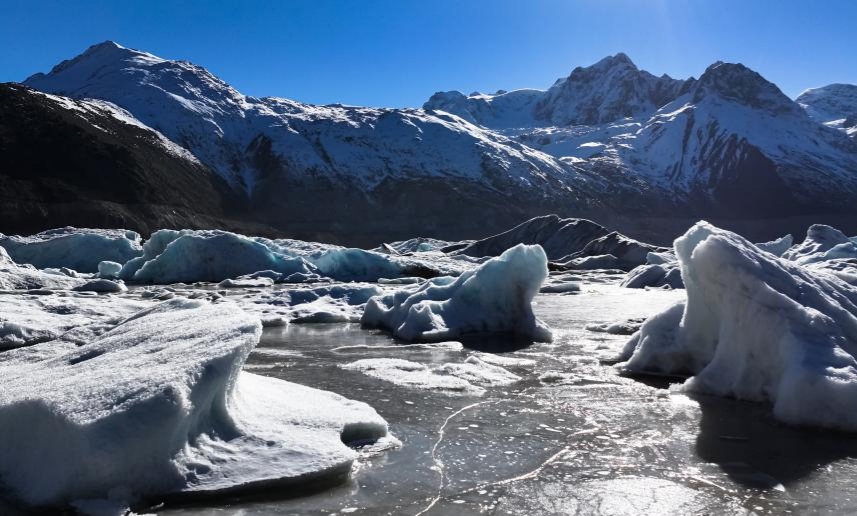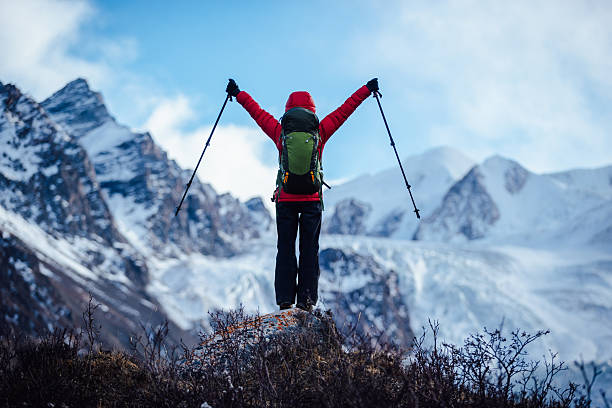
Details
Lhasa – Yamdrok Lake – Pelkhor Choede(Kumbum) – Shigatse
After breakfast, we set out to cross the 4,900-meter-high Gangbala Mountain and arrive at the entrance. The jade-like Yamdrok Lake appears in front of us. Yamdrok Lake is the highest freshwater lake in the world and is known as the Holy Lake in the Sky. Under the sunlight at different times, it will show extremely rich layers of blue, like a dream. We walked close to the Yamdrok Lake for about dozens of kilometers and could enjoy its beauty to our heart’s content. Then we came to the ancient city of Gyantse, where the Pelkhor Choede(Kumbum) was built by the first Panchen Lama. The ancient temple is hidden under the Zongshan Mountain and is a shining pearl on the Gyantse Plain. The most famous 100,000 Buddha Pagoda in the temple has the reputation of the Tibetan pagoda king and is currently the only temple pagoda that is well preserved. Overlooking the Zongshan Castle, we went to Shigatse, an important town in the rear Tibet.
Tips:
- There is a long road along the lake not far from Xiagangbala Snow Mountain. Stopping here and taking a short hike is the best way to get close to YamdrokLake and feel YamdrokLake. The weather near Yamdrok Lake is changeable. Prepare rain gear and thick clothes.
- Pelkhor Choede(Kumbum)opening hours: 9:00-19:00 every day, and the visit takes 2 hours.
- Bringing a camera into the 100,000 Buddha Pagoda requires an additional fee of 15 yuan. But being able to photograph 100,000 Buddha statues is still very worthwhile.
Accommodation: Shigatse
Shigatse – Rongbuk Monastery – Mount Everest Itinerary about 7 hours
After breakfast, we set off for Rongbuk Monastery on Mount Everest. The scenery along the way is extremely beautiful. The horizon is a continuous mountain range, and the green grass and wild flowers are constantly in sight, and the vision is extremely open. Along the way, we cross the 5,200-meter-high Gawu La Mountain and arrive at the Gawu La Pass Observation Deck. The world’s top peaks above 8,000 meters above sea level will appear in front of you, led by Mount Everest (8,844 meters above sea level), Cho Oyu (8,201 meters above sea level), Lhotse (8,516 meters above sea level), and Makalu (8,463 meters above sea level), which are majestic and magnificent. Then we went directly to the Rongpuk Monastery at the foot of Mount Everest, which is 5,020 meters above sea level. The temple is located at the end of the Rongbuk Glacier on the north slope of Mount Everest and is the highest temple in the world. The night slowly enveloped the mountains at dusk, and only the top of Mount Everest shone in the sky like a goddess’ golden crown under the sunset, enjoying the honor of being the only one in the world. The stars were shining brightly that night.
Accommodation: Rongbuk Monastery
Mount Everest – Everest Base Camp – Peiku Tso – Mt. Shishapangma – Bujikang Peak – Saga
Depart early in the morning for Everest Base Camp, where you’ll witness the grandeur of nature at its most majestic. If you’re lucky, you may catch a glimpse of the legendary “cloud flag”—a banner-like plume drifting from the summit of Mount Everest, known as a symbol of the mountain’s living spirit. After taking photos and soaking in the epic scenery, continue by vehicle toward the Shishapangma Nature Reserve, then proceed to Saga.
Peiku Tso
Located at the border between Gyirong County and Nyalam County, Peiku Tso is the largest and most beautiful plateau lake in the Shigatse region, covering over 300 square kilometers. Surrounded on three sides by snow-capped mountains, the lake sits in a broad open landscape rich in aquatic life.
To the south rises the majestic Mt. Shishapangma, while to the north flows the Yarlung Tsangpo River. This area is home to diverse wildlife such as Tibetan wild donkeys, bharal (blue sheep), black-necked cranes, bar-headed geese, and brown-headed gulls. Glacial meltwater slowly feeds into the lake, creating a timeless and untouched environment.
Here, there is no greed, no sorrow—only purity, beauty, and serenity. In this transcendent landscape, visitors may feel the wild passion of nature and, beside the pristine waters, perhaps even hear the music of the universe.
Mount Shishapangma
The 4th-highest peak in the world and the last to be climbed among the 8,000-meter giants, Shishapangma stands southeast of Everest, about 120 kilometers away.
To its east lies Mount Molamenqing (7,703 meters), and to the northwest, Mount Kailash (7,292 meters).
The name “Shishapangma” means “harsh weather” in Tibetan, but despite its name, the mountain is revered by Tibetans as an auspicious sacred peak. It features three closely clustered summits, with two minor peaks (8,008 m and 7,966 m) situated 200 and 400 meters northwest of the main peak.
Since August 15, 2005, mobile signal is available at Everest Base Camp—you can call friends or family from the foot of the world’s tallest mountain!
There is also a post office at base camp. If you bring your own postcards, you can get them stamped with three special postmarks: Dingri County, Everest Base Camp, and the China Everest Scientific Expedition. The cost is 5 CNY per stamp. Their own postcards are 5 CNY each, and if you send them from there, it costs an additional 1 CNY postage.
Accommodation: Saga
Saga – Paryang – Sacred Lake Manasarovar – Mount Kailash
Paryang is a picturesque grassland town full of wild western flavor. Here, visitors can observe the traditional clothing of local Tibetan herders and witness the idyllic scenery of yaks and sheep roaming freely between lush meadows and snow-capped peaks.
The route from Zhongba—a dusty Tibetan town with a few unmarked shops, eateries, and indistinct guesthouses—to Paryang (about 110 km) passes through rugged terrain, including sand dunes and river crossings. While the sand is manageable, the real challenge lies in carefully fording streams, which typically appear about an hour after leaving Paryang.
The section from Zhongba to Dargyeling Monastery is considered one of the most spectacular and panoramic stretches of the southern route.
Afterward, continue the journey to the Sacred Lake Manasarovar (Mapam Yumtso). Drive about 20 km to Bagar, then another 50 km to the shores of the holy lake.
Lake Manasarovar
Known in Tibetan as the “Unconquerable Lake of Jade”, Lake Manasarovar is located 26 km southeast of Mount Kailash, at an altitude of 4,587 meters. It is one of the highest freshwater lakes in the world and is honored as the King of Sacred Lakes in Tibet.
In Tibetan Buddhism, the lake is believed to be a gift from Chakrasamvara (the deity of supreme bliss), a source of divine nectar. Bathing in its waters is said to cleanse the soul of sins and negative karma, while drinking it is believed to cure illnesses and strengthen the body.
For pilgrims, circumambulating the lake is considered an act of immense merit, and many describe reaching the lake and performing a kora as one of life’s greatest spiritual blessings. The lake is also regarded in myth as the Jade Pool of the Queen Mother of the West, a celestial paradise.
Jiu Monastery
Perched on a hill beside Lake Manasarovar, Jiu Monastery is a sacred site where Guru Padmasambhava is said to have meditated for seven days. From the monastery, one can enjoy a panoramic view of the sacred lake. Nearby lies a natural outdoor hot spring, where visitors may soak and relax beneath the vast Tibetan sky, overlooking the holy waters.
At Jiu Monastery , witness the magnificent sunrise over Lake Manasarovar before continuing on toward Mount Kailash. On the way, make a brief stop at Lake Rakshastal (La’ang Tso).
Mount Kailash
Arrive at Darchen (darchen), the base village and the starting point of the Mount Kailash kora (pilgrimage circuit). Vehicles cannot proceed beyond this point.
Mount Kailash, the main peak of the Gangdise Range, rises to 6,638 meters and is revered as the most sacred mountain in Tibet. In Tibetan, “Mount Kailash” means “Precious Snow Mountain” or “Holy Mountain”. It is considered the spiritual center of the world by multiple faiths—Bön, Buddhism, Hinduism, and Jainism.
Each year, pilgrims from India, Nepal, Bhutan, and across the Tibetan plateau journey here in devotion. The mountain is often wrapped in clouds, making its true summit elusive, but when visible, its perfectly symmetrical, snow-covered pyramid shape stirs awe and reverence.Kailash remains an unclimbed and inviolate peak, its spiritual sanctity untouched by human conquest.
Accommodation: Darchen
Darchen – Guge Kingdom – Zanda Earth Forest – Ruinen Von Guge.
On the journey to Zanda, you’ll cross Ayi La Mountain in the Gangdise Range, entering the surreal landscape of the Zanda Earth Forest, which surrounds the entire region.Zanda Earth Forest Located in Zanda County, Ngari Prefecture, the Zanda Earth Forest covers hundreds of square kilometers. Geologically, this landform is classified as “lacustrine-fluvial deposits”.
According to experts, over a million years ago, the area between Zanda and Purang was covered by a vast inland lake of more than 500 km². Due to the Himalayan orogeny (mountain-building process), the lake basin was gradually uplifted and its water level dropped. Over hundreds of thousands of years, wind and rain erosion carved out this one-of-a-kind landscape.
From the edges of the forest, you can view the Sutlej River, especially stunning at dusk when the fading sunlight casts golden shadows across the terrain.
Tholing Kloster built in the early 11th century by King Yeshe Ö of the Guge Kingdom, Tholing Kloster became a key center for the revival of Tibetan Buddhism. Modeled after Samye Monastery in Central Tibet, it once served as the religious heart of the kingdom.
Despite centuries of natural and human damage, the monastery still features many towering stupas, prayer halls, and monastic ruins that hint at its former glory.
Ruinen Von Guge afterward, head to the Ruinen Von Guge, located about 20 kilometers from Zanda in the Zhaburang area, on the southern bank of the Sutlej River, amidst a dramatic earth forest landscape.
After the fall of the Tubo Empire, a surviving prince fled to Ngari and founded the Guge Kingdom. In 1630, the Ladakhis—relatives of the Guges—invaded and brought an end to the dynasty. Over time, the glorious kingdom faded into ruins.
Today, visitors can explore a vast site filled with temples, assembly halls, the winter and summer palaces, stupas, secret passageways, burial caves, and the famous “Wall of 108 Stupas.” The ruins bathed in sunset—known as the “Guge Twilight”—make for spectacular photography.
Later, continue to Shiquanhe Town (also called Ali Town), the capital of Ngari Prefecture. This is a young and modern town, developed in just the last two decades.
Sitting at an elevation of 4,300 meters, Shiquanhe is surrounded by the towering giants of the Himalayas, Gangdise Range, and Kunlun Mountains.
Accommodation: Zanda
Guge – Sacred Mountain & Holy Lake – Paryang
Once again, immerse yourself in the breathtaking scenery of the sacred mountain and holy lake.
The sunlight and clouds of Tibet constantly transform the landscape, creating a magical and ever-changing natural spectacle. Even though the route is the same as before, the views will feel entirely new and captivating.
Accommodation: Paryang
Paryang – Saga
A full day of driving awaits, and it can be quite tiring. Upon arrival, relax at the hotel — enjoy a well-deserved hot shower and let the comforts of town soothe your body after days on the road.
Accommodation: Saga
Saga – Shigatse
After several days of long travel, we finally returned to a larger city. Seeing so many cars and people again, it felt as if we had re-entered human civilization.
Accommodation: Shigatse
Shigatse – Tashilhunpo Monastery – Lhasa
In the morning, visit Tashilhunpo Monastery (entrance fee: 55CNY/person), the spiritual seat of the Panchen Lama and one of the six great monasteries of the Gelugpa (Yellow Hat) sect. Founded in 1447 by Gendun Drub, the First Dalai Lama, it later became the residence of successive Panchen Lamas.
In the afternoon, drive back to Lhasa along the Yarlung Tsangpo River Valley, passing through grasslands, canyons, and the desert-like scenery of western Tibet.
Accommodation: Lhasa
Fee Description
Fee Inclusions:
Price to be discussed (Customizable)



